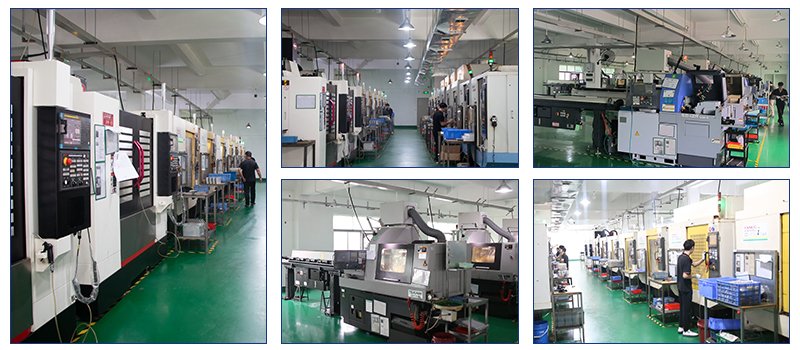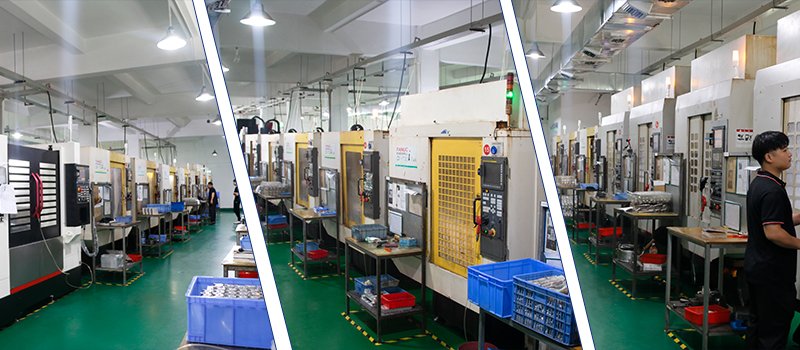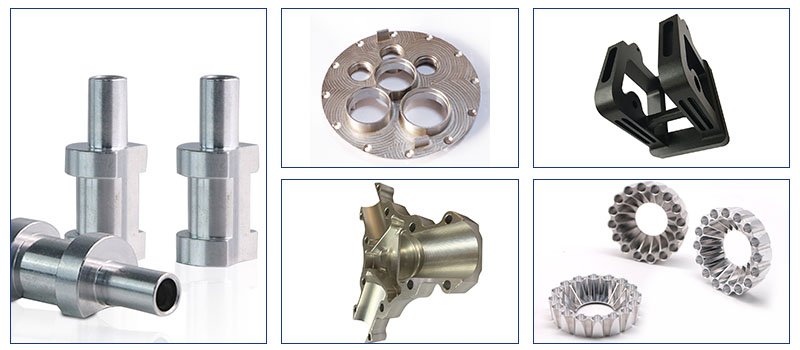As an expert in CNC machining with years of hands-on experience, I’ve had the privilege of working with a wide range of industries, but none quite as fascinating and dynamic as robotics. The robotics industry demands the highest level of precision and efficiency, both of which are essential for ensuring that robots can perform complex tasks reliably and accurately. In this article, I’ll dive into how custom robot parts are created using CNC machining and explore how this manufacturing method significantly boosts efficiency and precision. If you’re involved in designing or manufacturing robotic systems, this is a must-read.
CNC Machining: A Quick Overview
Before we dive deep into the specifics of how CNC machining enhances the efficiency and precision of robot parts, let me give you a quick rundown of what CNC machining is. CNC stands for Computer Numerical Control, and it refers to a manufacturing process where computers control machine tools to create parts by cutting, drilling, milling, or turning a material. It’s a highly versatile and precise method, especially when working with materials like metal, plastic, and composites.
When we talk about robot parts CNC machining, we’re referring to the use of CNC machines to produce custom parts for robots, ranging from joints and actuators to sensors and structural components. This type of machining is essential for the robotics industry because it allows for the manufacturing of complex and highly precise components that are critical for a robot’s functionality.
The Importance of Customization in Robotics
One of the standout features of robotics is its versatility. Robots are designed for a wide array of applications, from industrial automation and logistics to medical surgeries and autonomous vehicles. Each robot has unique requirements, which often means that off-the-shelf parts simply won’t do. That’s where custom robot parts come in.
Customization allows manufacturers to design and create parts that fit the exact needs of the robot in terms of size, functionality, and material properties. For example, a robot designed to handle delicate surgical procedures requires custom grippers with high precision, while a robot working in a manufacturing environment may need custom gears and joints that can withstand high loads and constant movement.
Custom parts are often the difference between a robot functioning well and a robot that excels in its task. And CNC machining is one of the most effective ways to create those parts, ensuring that they meet the exacting standards required by the robotics industry.
How CNC Machining Boosts Precision in Robot Parts
In robotics, precision is everything. Robots are often tasked with performing highly delicate and repetitive tasks, and if even the smallest component is out of alignment, it can affect the entire system’s performance. This is where CNC machining truly shines.
1. Tight Tolerances for Complex Geometries
CNC machines are capable of working with extremely tight tolerances, which is critical for creating robot parts that fit together perfectly. Whether it’s a tiny gear or a complex joint, CNC machining can produce components with precision to the thousandth of an inch (0.001”), ensuring that everything aligns as needed for smooth and accurate robot movement.
For example, when creating a robot arm, each joint must be precisely aligned so that the arm moves fluidly. CNC machining ensures that every piece is manufactured to exact specifications, which allows the arm to perform with high precision. If the parts weren’t perfectly machined, the robot would be prone to errors, such as jerky movements or inaccuracies in positioning.
2. Consistent Reproducibility
One of the great advantages of CNC machining is its ability to produce identical parts consistently. Whether you’re manufacturing one part or thousands, CNC machines can replicate the exact same results time after time, ensuring that every component is made to the same high standard.
This is particularly beneficial in robotics, where multiple identical parts are often needed. For instance, if you need to produce a series of robot legs or actuators, CNC machining ensures that every part is consistent in terms of size, shape, and quality.
3. Complex Designs with High Precision
The complexity of robot parts continues to evolve, with designs becoming more intricate and specialized. CNC machining allows for the production of highly complex shapes and geometries that are difficult to achieve with traditional manufacturing methods. This opens up new possibilities in robot design, enabling engineers to create more advanced robots that can tackle even more demanding tasks.
For instance, consider a robot designed for exploration in extreme environments, like deep-sea or space missions. The parts needed for these robots often require unique designs that are not only complex but must also withstand harsh conditions. CNC machining is perfect for creating these specialized components, ensuring both high precision and durability.
The Impact of CNC Machining on Efficiency in Robotics
Now that we’ve covered how CNC machining enhances precision, let’s dive into how it improves the efficiency of robotic systems. Efficiency is crucial in robotics, as robots are often expected to operate continuously for long periods with minimal human intervention.
1. Faster Production Times
One of the major benefits of CNC machining is its ability to rapidly produce parts. With CNC machines, once the design has been finalized, the production process is automated, allowing for faster manufacturing times. This is particularly useful when creating custom robot parts, as it allows manufacturers to quickly produce prototypes or small batches of parts for testing and assembly.
In my experience, CNC machining can drastically cut down production times compared to traditional manufacturing methods, which is invaluable when you’re working with tight project timelines or need to rapidly scale up production.
2. Reduced Waste and Material Usage
CNC machining is known for its efficiency in material usage. Traditional manufacturing processes often result in significant amounts of waste material, especially when creating complex shapes. However, CNC machines are highly precise in how they cut and shape materials, minimizing waste and ensuring that only the necessary amount of material is used.
This efficiency in material usage is not only cost-effective but also environmentally friendly. Given that many robot parts are made from expensive materials like titanium or high-grade steel, minimizing waste can result in significant cost savings, particularly when producing parts for large-scale robotic systems.
3. Customization Without High Costs
Historically, custom parts came with a hefty price tag. However, CNC machining allows for cost-effective customization without compromising on quality. This is especially important for the robotics industry, where custom parts are essential, but cost efficiency is still a major concern.
By using CNC machining, manufacturers can create custom robot parts in a way that is both affordable and efficient. This allows robotics companies to offer more cost-effective solutions to their clients while still meeting the high standards required for performance.
CNC Machining in the Future of Robotics
As robotics continues to advance, CNC machining will undoubtedly play an even more significant role in the industry. The future of robots involves increasingly complex designs, miniaturized components, and highly specialized parts. CNC machining will be the go-to method for creating these advanced components, offering the precision, speed, and flexibility needed to keep up with the demands of next-generation robotics.
1. Integration with Additive Manufacturing
One of the most exciting trends I see in the future of CNC machining is its integration with additive manufacturing (3D printing). 3D printing is excellent for creating parts with complex geometries and internal structures, but it can sometimes lack the precision and durability required for certain robot parts. By combining CNC machining with 3D printing, we’ll be able to create hybrid components that offer both intricate designs and high strength.
2. Smaller, More Efficient Robots
With the demand for smaller, more efficient robots growing—especially in fields like healthcare and logistics—CNC machining will be integral in manufacturing the tiny, precise parts that these robots require. As robots become smaller and more compact, the ability to produce high-precision components will only become more important.
Conclusion: Why CNC Machining is Crucial for Robotics
In conclusion, CNC machining is indispensable to the robotics industry. Whether it’s creating custom components for robot joints, actuators, or sensor housings, the ability to achieve high precision, efficiency, and cost-effectiveness is what makes CNC machining the ideal method for manufacturing robot parts.
If you’re working in the robotics field and looking for a reliable partner to produce high-quality, custom parts, CNC machining should be at the top of your list. The benefits it provides in terms of precision, material efficiency, and rapid production make it a critical tool in advancing the capabilities of modern robots.
At YL-Machining, we specialize in creating custom robot parts using CNC machining. With our advanced technology and expertise, we can help you bring your robotic designs to life with unmatched precision and efficiency.
Have you ever faced challenges in sourcing custom robot parts? Let me know in the comments, and let’s discuss how CNC machining can help streamline your production process!







